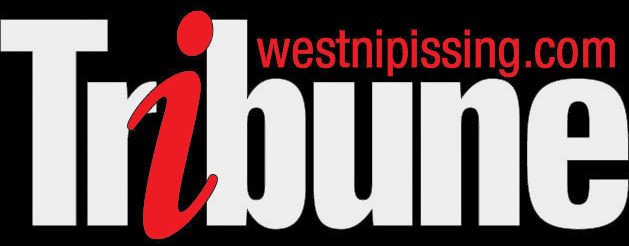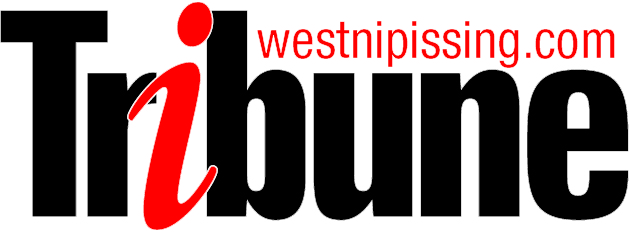Isabel Mosseler
Tribune
Chief Petty Officer 2nd Class Patrick Stevens, a member of Nipissing First Nation, holds a unique position in the Canadian military. He serves as the Indigenous Advisor to the Canadian Armed Forces Chaplain General. After 18 years of service and nearing retirement, he was offered this role in October 2021 and readily accepted. “I am responsible for Indigenous Spirituality in the Canadian Armed Forces… helping the military to navigate those decisions. If any Indigenous members in the Forces wants to do a ceremony and needs support and needs to find any sacred medicines or the tools, I help the chaplain services,” he explained to The Tribune this past summer while visiting his parents at NFN.
Stevens is the second person in this position, a relatively new position which heralds a welcome change for those service men and women of Indigenous background who, in previous generations, were generally overlooked when it came to the spiritual comfort of their own traditions. The Chaplain General is concerned with the spiritual welfare of the combined Canadian forces: Army, Navy and Air Force.
Patrick Stevens’ trade is as a Sonar Operator, a specialist trained to manipulate sensitive audio sensors within a water column to detect, locate and track submarines. The position as an Indigenous Advisor, he says, fits well with his own identity as an Indigenous Canadian, his personality, the teachings he follows, and the ideas he uses to assist his fellow service men and women in their most fundamental needs as human beings – their spiritual welfare. As Remembrance Day approaches and we reflect, as a nation, on the sacrifices made in the past, and in the present, by our nation’s military personnel, we also need to reflect on how our Indigenous personnel in particular were not given the same due respect as others. There is a history of heavy recruitment on Canada’s reserves, and many have answered the call, Stevens being one of them. The respect, long overdue, is now part of military culture because of people such as Stevens.
Giving a brief overview of his career, Stevens has seen many ports of call, throughout the Mediterranean, north to Iceland, Belgium, Norway, and more. He started in the west coast navy and moved to the east coast navy. “When I first joined the military, I did not want to be known for my culture, I did not want to be known for who I was,” he relates. “I was ashamed of my culture, so for a long time I didn’t want to be known as “the Indigenous person”… I had the ability to hide who I was, I kept my hair short, I’m fairly light-skinned, and unless you knew my background you wouldn’t know I am Indigenous.”
In 2008, the Defense Aboriginal Advisory Group hosted a ceremony in Thunder Bay, Ontario. “I was on the HMCS Halifax, and they asked anyone who was Aboriginal who wanted to be part of the ceremony to come to the upper decks. For some reason that day, I don’t know what told me, I am Indigenous, I want to take part. I didn’t know what was going on, I just went there and the local [Indigenous] community leader… came down to the ship and presented us all with eagle feathers. The recognition of giving an eagle feather is the recognition of my challenges, my tribulations, my identity, as a young Indigenous man stepping into manhood, as a community member. It opened my eyes to the world before me. I started to talk about my culture at that point, talk about my history. Every chance I had to take teachings, or ceremonies, I took part. That led to me becoming a co-chair for the Quebec Regional Defence Aboriginal Advisory Group, so I was advocating on behalf of a lot of Indigenous people. I must have helped write over 100 memorandums on regulations in the military. For an Indigenous person to wear their hair in a traditional way required an approval process. We’re now working to change that so that’s no longer required… allowing for more individuality… allowing Indigenous men and women to be proud of their culture and wear their hairstyle.”
Going from hiding his personal reality to advocating diligently for Indigenous rights within the military was a huge transition. “That’s when someone questioned me, “Pat you advocate for everyone else, you talk about culture, but you don’t show your own hair”, – from that point I thought, I don’t know why – I started looking and realized – why am I not growing my hair too?” Today Patrick Stevens wears his two braids with confidence and pride in his culture and the part Indigenous warriors have historically played in Canada’s world class military.
“I was recruited right off of Nipissing First Nation myself. An Indigenous member of the military encouraged me to join the Canadian Armed Forces, the Aboriginal Entry Program, a 3-week indoctrination period… I did 3 years in the Reserves, from there joined [the navy] and performed well in my job [as sonar operator].” Having the chance to advocate for Indigenous people in the military led to Stevens sitting on many councils and discussions on how to navigate this new area. “One of the biggest things in the Armed Forces, Canada-wide, is having these conversations, mutual respect and understanding. In Ontario alone there are 295 first nations, 630 identified first nations Canada-wide, and that’s just identified first nations. We have status, non-status, Métis – five major Métis nations – 10 different Inuit communities… It’s surprising to see how many different variants of culture, language, and traditions are out there.”
Navigating these spiritual waters takes awareness, skill, a deep respect, understanding, excellent communication and partnership building. “Occasionally I will reach out to various Indigenous people and ask what they are looking for, what kind of support they need. Sometimes they need the space to hold a small ceremony for themselves, they want certain sacred medicines or certain sacred items. With the support of the chaplaincy service, I can get what they need to practice their spirituality. The Canadian Armed Forces makes efforts to meet the needs of all faiths, this is just an extra step they are taking.”










Bravo and well done and said. Thank you for you service. Stay safe and healthy.